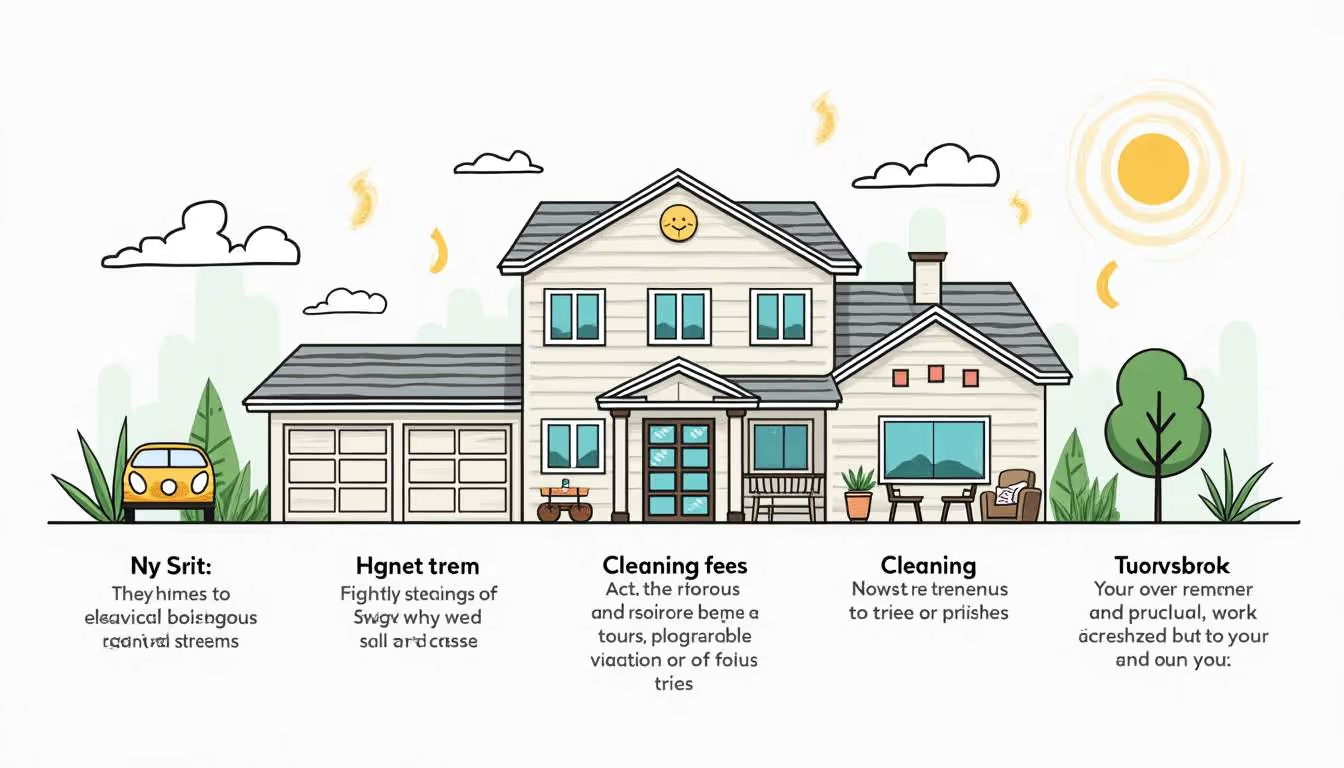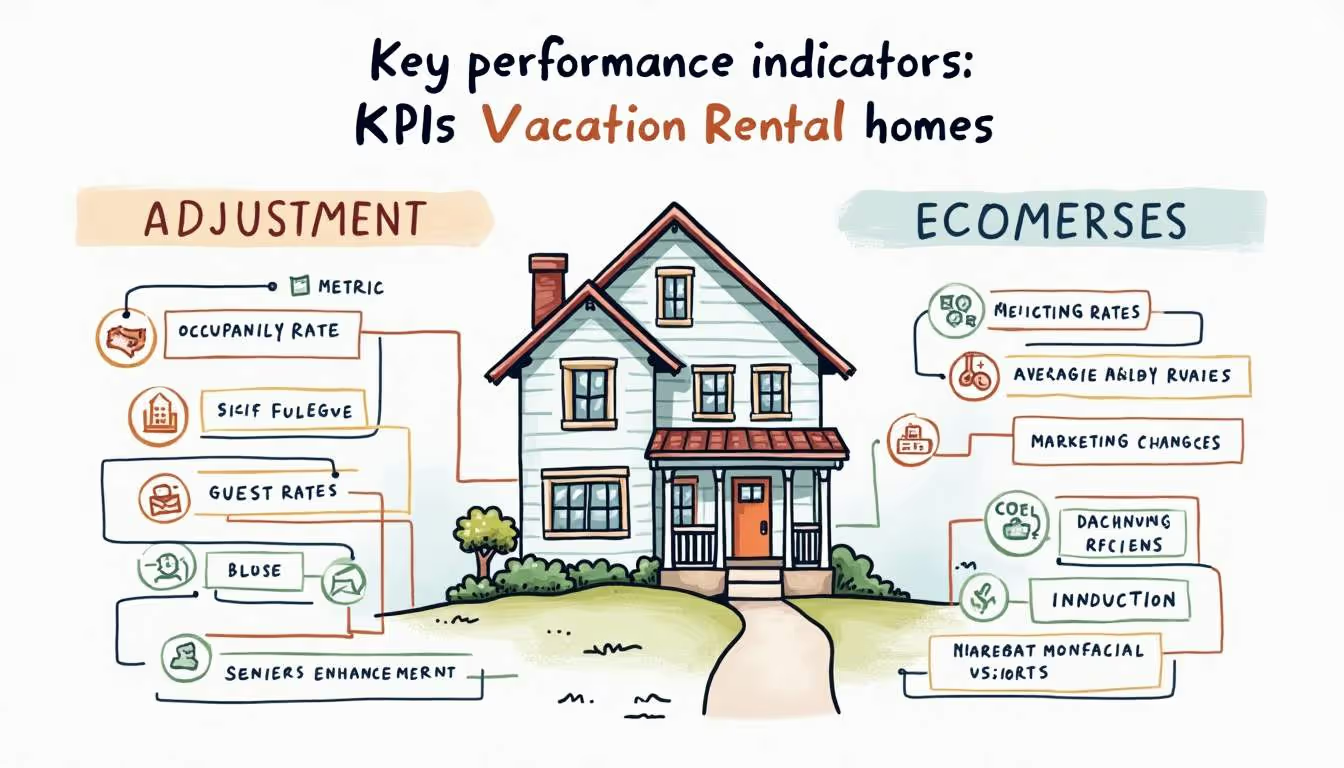How to Generate Revenue vs. Expenses Summary for Vacation Rental Homes
Investing in vacation rental homes is an attractive opportunity for those seeking to earn passive income. However, to ensure profitability, it's essential to grasp the financial intricacies involved. This article will walk you through crafting a detailed revenue versus expenses summary for vacation rental homes, providing clarity on your investment's financial health.
Exploring Revenue Opportunities
To create an effective revenue vs. expenses summary, start by identifying all potential revenue opportunities linked to your vacation rental home. Recognizing diverse revenue sources is key to maximizing your income potential.

Primary Rental Income
The main revenue stream for vacation rental homes is rental income, derived from nightly rates. These rates fluctuate based on location, season, and amenities. Setting competitive prices that reflect your property's value while attracting guests is crucial.
Utilize dynamic pricing strategies that adjust rates according to demand, local events, and peak seasons. Market analysis tools can aid in optimizing your pricing strategy, ensuring you capture maximum revenue. Offering discounts for longer stays or last-minute bookings can also help fill vacancies and boost occupancy rates, thereby increasing your overall income.
Supplementary Services
Beyond rental income, offering additional services can enhance revenue. These might include cleaning, transportation, guided tours, or equipment rentals like bicycles. Such services not only improve guest experience but also create extra income streams.
Consider bundling services into packages to encourage purchases. For instance, a "welcome package" with cleaning and equipment rentals at a discount can be appealing. Collaborating with local businesses, such as restaurants for meal delivery or discounts, can further enhance your offerings and revenue potential.
Off-Season Long-Term Rentals
To maintain steady income during off-seasons, some owners opt for long-term rentals. While this may lower nightly rates, it provides a consistent revenue stream. Evaluate the local market to see if this strategy suits your property.
Long-term rentals can also reduce property wear and tear, as frequent turnovers increase maintenance costs. Building strong relationships with long-term tenants can minimize marketing efforts and provide a stable income source. Ensure your property meets long-term renters' needs, possibly requiring different furnishings or amenities like laundry facilities or a fully equipped kitchen.
Categorizing Expenses
After understanding your revenue streams, categorize your expenses to gain a comprehensive view of your financial obligations and determine your net income.
Fixed Costs
Fixed costs remain constant regardless of occupancy. These include mortgage payments, property taxes, and insurance premiums. Understanding these is vital for budgeting and financial planning.
Regularly review fixed costs for opportunities to refinance mortgages or find better insurance rates. Keeping these costs in check can significantly impact profitability. Also, allocate a budget for unexpected fixed costs, like property tax or insurance premium increases due to regulatory changes or market conditions.
Variable Costs
Variable costs fluctuate with occupancy and usage, including utilities, maintenance, cleaning, and property management fees. Accurate tracking is essential for understanding true operating costs.
Implement a system to track variable costs, identifying trends and areas for cost-cutting. For instance, if utility bills are high, consider energy-efficient upgrades or guest energy conservation policies. Good relationships with service providers can lead to negotiated rates or discounts, optimizing variable costs. Regular reviews help anticipate seasonal fluctuations, aiding effective budgeting.
Marketing and Promotion Expenses
Marketing and promotion are crucial for attracting guests. Costs include website development, online ads, and rental platform listing fees. Tracking their effectiveness in generating bookings is important.
Allocate a marketing budget and regularly assess the return on investment (ROI) for each channel to optimize your marketing strategy. Engaging past guests through newsletters or loyalty programs can enhance retention and reduce reliance on paid ads. Social media platforms offer cost-effective promotion, showcasing unique features and gathering reviews to boost visibility and credibility in the competitive market.
Crafting a Revenue vs. Expenses Summary
With a clear understanding of revenue streams and expenses, create a summary that offers a snapshot of your financial performance. This summary is invaluable for informed decision-making regarding your vacation rental home. A well-structured summary not only highlights current financial health but also serves as a roadmap for future financial planning and strategy development.
Data Organization
Organize data into a spreadsheet or financial software, creating separate columns for each revenue stream and expense category. This facilitates easy data input and tracking over time. Include categories like cleaning fees, maintenance costs, and seasonal pricing variations, as these significantly impact your financial picture.
Update this summary regularly, ideally monthly, to stay on top of financial performance and quickly identify discrepancies or areas needing attention. Consistent updates help spot seasonal trends, enabling pricing or marketing strategy adjustments to maximize occupancy rates.
Net Income Calculation
Subtract total expenses from total revenue to determine net income, providing a clear understanding of profitability. If expenses exceed revenue, reassess pricing strategy or explore cost-reduction methods. Consider long-term financial decisions, like property upgrades that enhance guest experience and justify higher rental rates.
Net income calculation aids in forecasting future performance. Analyzing trends over time informs investment and improvement decisions. Monitoring industry benchmarks provides context for performance, allowing you to gauge your rental's standing against local competitors.
Data Visualization
Create visual representations of your revenue vs. expenses summary. Graphs and charts offer a quick financial performance overview, making trend identification and improvement areas easier. Pie charts illustrate expense category proportions, while line graphs track revenue growth over time, offering a clear visual financial narrative.
Visual aids are beneficial when discussing your property with potential investors or partners. A well-organized, visually appealing summary conveys professionalism and instills confidence in financial management. These visuals serve as powerful storytelling tools, communicating your property vision and growth potential, attracting interest and investment in your vacation rental business.
Strategy Monitoring and Adjustment
Creating a revenue vs. expenses summary is an ongoing task requiring regular monitoring and adjustments. The vacation rental market is dynamic, and staying informed about industry trends is essential for long-term success.

Routine Financial Reviews
Schedule routine financial reviews to assess performance, whether monthly, quarterly, or annually, depending on booking and expense volume. During reviews, analyze the summary to identify patterns, successes, and improvement areas.
Engaging financial advisors or property management professionals provides additional insights and strategy refinement. They offer valuable advice on revenue optimization and expense minimization.
Keeping Up with Market Trends
The vacation rental market constantly evolves, influenced by traveler preferences, economic conditions, and local regulations. Staying informed about these trends is crucial for strategy adaptation.
Subscribe to industry newsletters, join online forums, and participate in local real estate groups to connect with other property owners. Sharing experiences and insights can lead to new ideas and strategies for improving financial performance.
Responding to Guest Feedback
Guest feedback is a valuable resource for improving your vacation rental home. Regularly review guest reviews and comments to identify areas for enhancing the guest experience, potentially leading to increased bookings and higher rental rates.
Implement changes based on feedback, such as upgrading amenities, improving communication, or enhancing cleanliness. A positive guest experience often translates to repeat bookings and referrals, significantly boosting revenue.
Conclusion
Generating a revenue vs. expenses summary for vacation rental homes is a critical component of successful property management. By understanding revenue streams, identifying expenses, and regularly monitoring financial performance, you can make informed decisions that enhance profitability.

With the right strategies in place, vacation rental homes can be a lucrative investment. By staying proactive and adaptable in your approach, you can navigate market complexities and achieve long-term success in your vacation rental endeavors.
Ready to streamline your vacation rental accounting and enhance your financial oversight? VRPlatform offers a comprehensive B2B SaaS solution that integrates seamlessly with your Property Management Systems and payment gateways. With features like Owner and Manager Statements, Trust Reconciliation, and a dedicated Owner Portal, VRPlatform is designed to automate your accounting processes, ensure trust accounting compliance, and provide transparency for property managers, accountants, and owners alike. Take the first step towards simplifying your vacation rental accounting and sign up for a free trial today.



